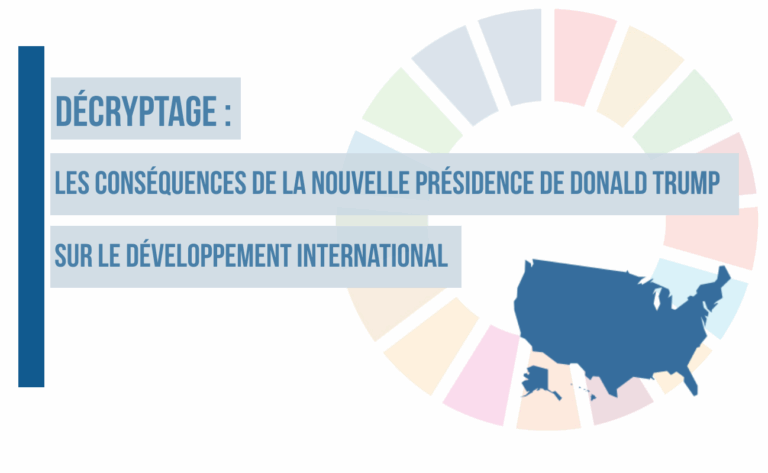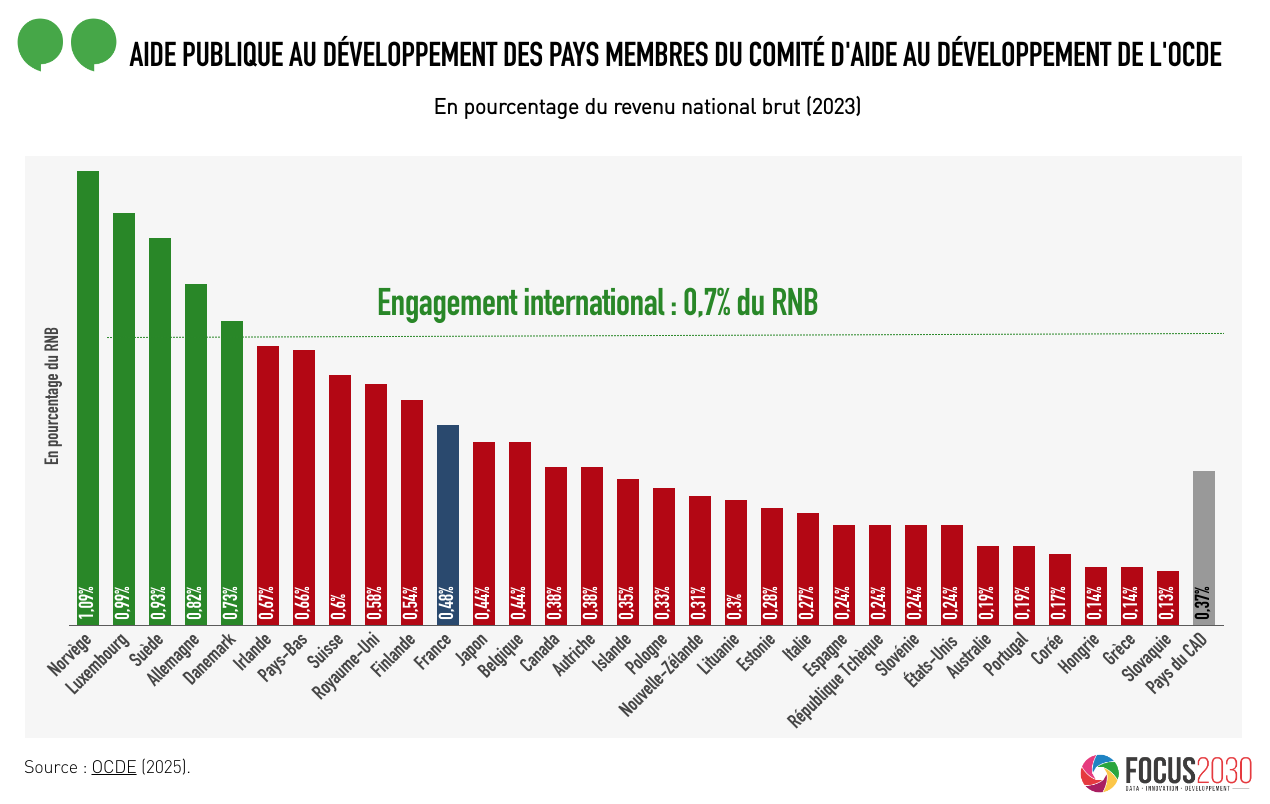Slight increase in Official Development Assistance in 2023
Publié le 16/01/2025.
| This article presents the official development assistance figures for the main OECD donors in 2023. For the latest available statistics, please consult this article |
The OECD published, on 16 January 2025, the final figures for the amounts allocated by donor countries to official development assistance (ODA) in 2023. ODA from members of the OECD’s Development Assistance Committee (DAC) amounted to a historic $223.3 billion in 2023, or 0.37% of the combined gross national income of DAC countries. This is the highest level ever, despite a modest increase of 1.6% in real terms.
However, 17 donor countries, including France, have decreased their ODA compared to 2022, despite growing international needs. Analysis.
ODA REACHES A NEW HIGH IN 2023
For the fifth consecutive year, ODA from DAC donor countries has reached a new record, standing at $223.3 billion, an increase of 1.6% in real terms compared with 2022. The United States remains the largest donor ($65 billion), followed by Germany, Japan, the United Kingdom and France.
However, the increase in ODA in 2023 is mainly due to aid to Ukraine (which reached 18.2 billion dollars and represents 8% of total net ODA) and to humanitarian aid (26.1 billion, 11.6% of total net ODA) and contributions to multilateral organisations. Furthermore, only 14 of the DAC member countries have increased their ODA, while 17 have decreased it.
The costs of hosting refugees in donor countries, which can be counted as ODA in the first year of hosting and largely explain the increase in ODA in 2022, represented 32.5 billion dollars in 2023, or 14.6% of total ODA (-1.6% compared to 2022).
This amount is equivalent to 0.37% of the combined gross national income (GNI) of the DAC countries, the same proportion as in 2022. Only five countries have reached the target of allocating 0.7% of their GNI to ODA, which was adopted by the industrialised countries at the United Nations in 1970: Norway, Luxembourg, Sweden, Germany and Denmark.
An increase in ODA since the adoption of the Sustainable development goals
Since the adoption of the Sustainable Development Goals in 2015, total ODA from DAC countries has more than doubled in real terms. Compared with 2019, it has risen by 34%, in response to the multiple global crises generated in particular by the Covid-19 pandemic, the war in Ukraine, climate change and their cascading consequences. It should be noted, however, that the cost of receiving refugees in donor countries declared as ODA, which by its very nature does not contribute to the fight against poverty in developing countries, has tripled since 2019.
Despite its commitments, France substantially reduces its ODA
France’s ODA reached $15 billion in 2023, a decrease of 13% compared with the previous year (-2.1 billion in real terms). As a result, France has dropped one place in the ranking of donor countries to 5th place, well behind the United Kingdom (19.1 billion in 2023).
This amount represents 0.48% of its GNI (compared with 0.56% in 2022), in contradiction with the trajectory set out in the 2021 programming law on inclusive development and the fight against global inequalities. Indeed, the latter envisaged reaching 0.61% of France’s GNI dedicated to ODA in 2023.
Yet the trajectory of French ODA is unlikely to pick up again in 2024 and 2025: a few months after postponing by five years the target of allocating 0.7% of national wealth to international solidarity, the French government announced successive cuts of 742 million euros in the ODA budget in 2024 and almost 2 billion euros in the Finance Bill for 2025 (before the government’s censure in November 2024). This abandonment of the target of reaching 0.7% by 2025, combined with the cuts envisaged, could represent a shortfall of almost 22 billion euros for development between 2025 and 2030.
Find out more about the preliminary figures for ODA in 2023.











